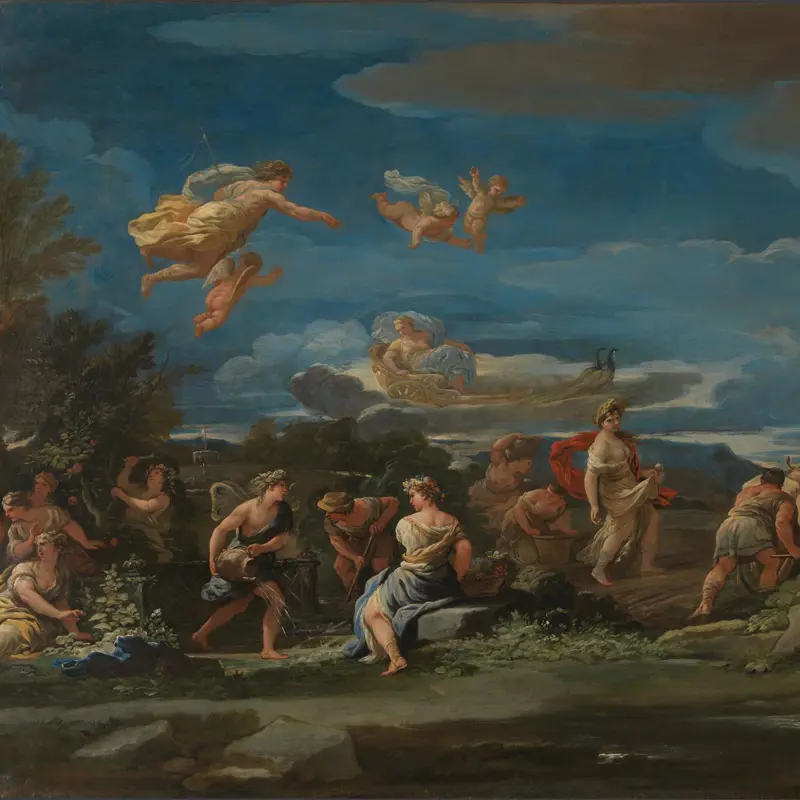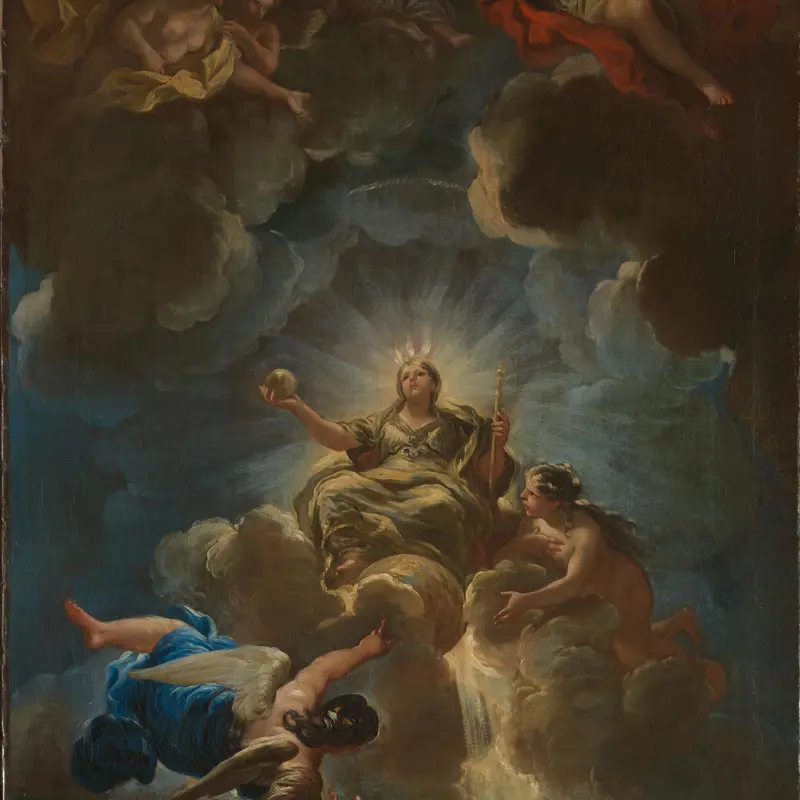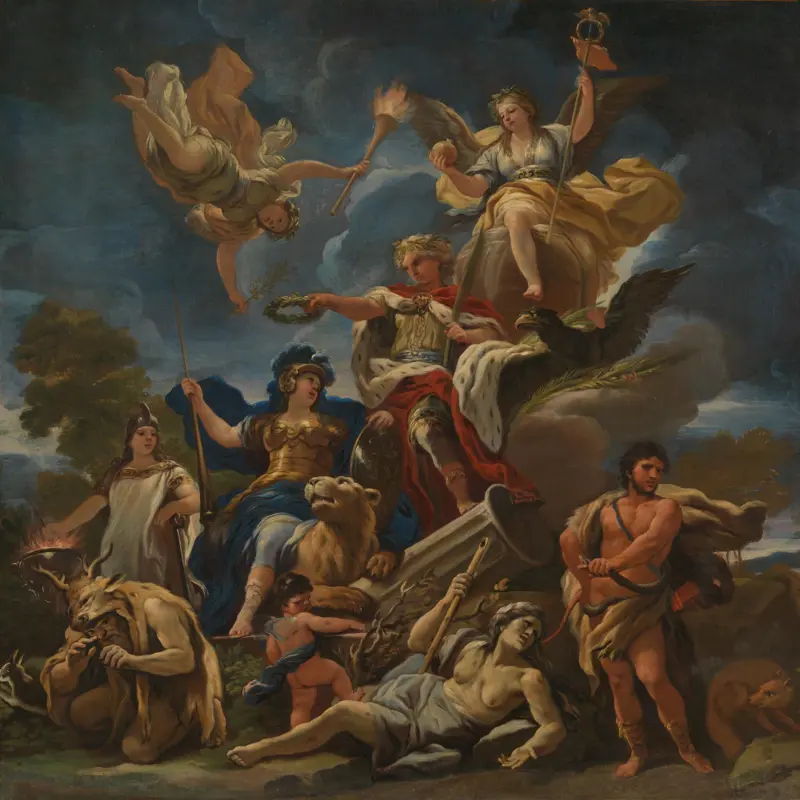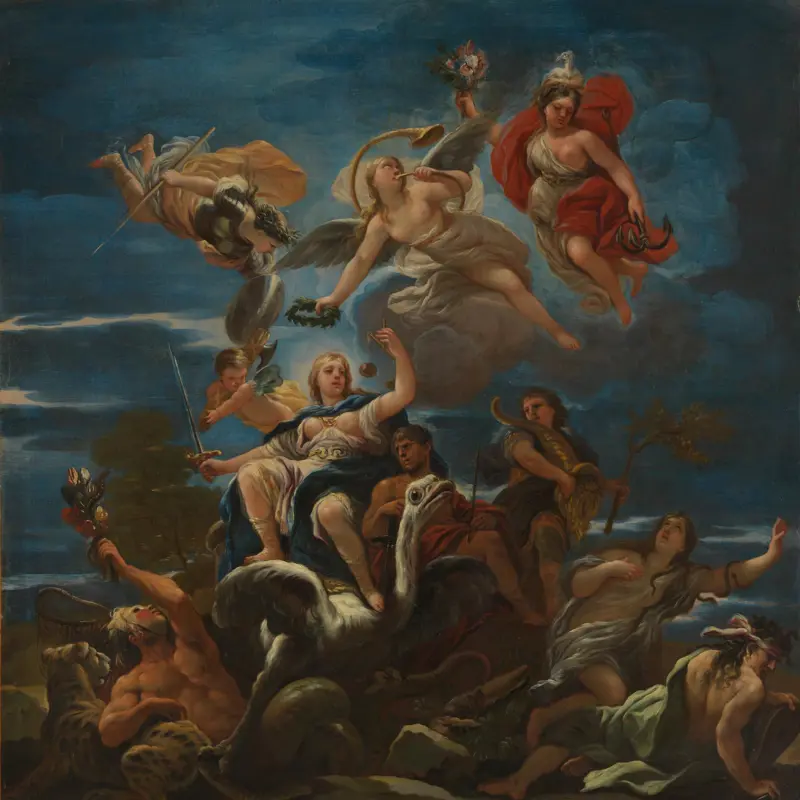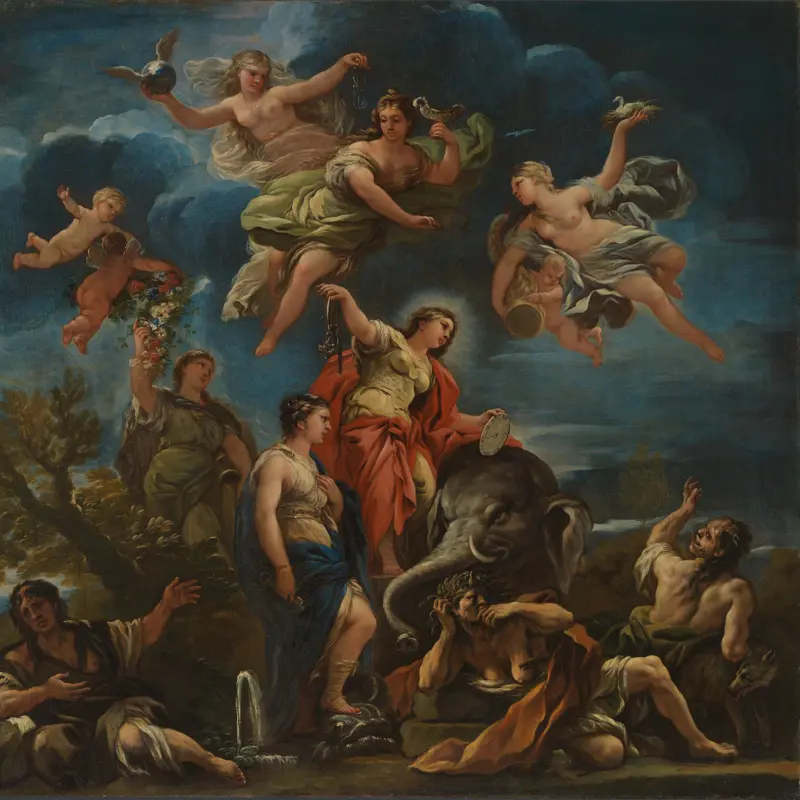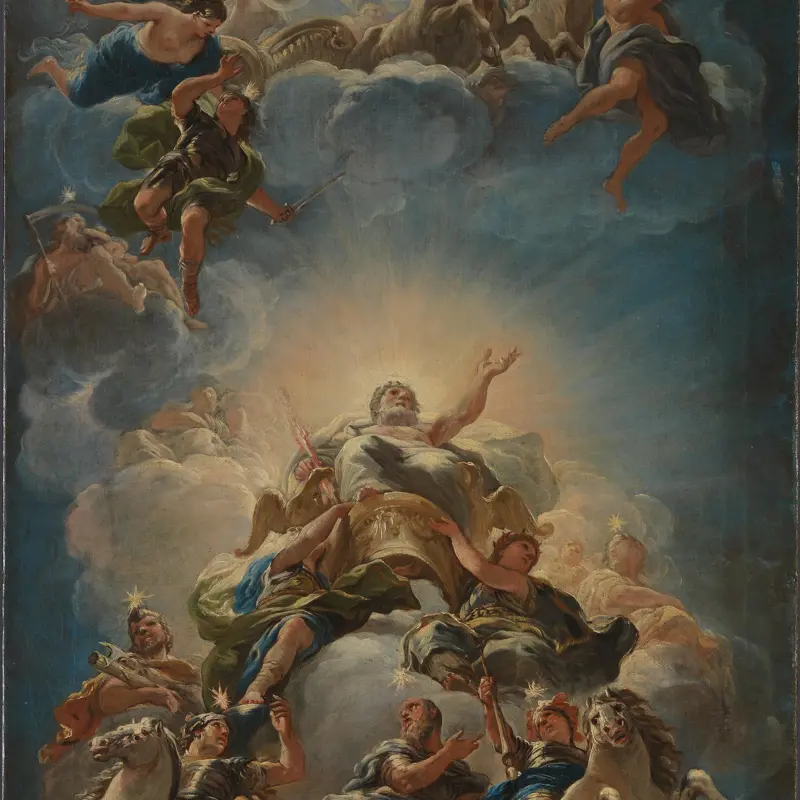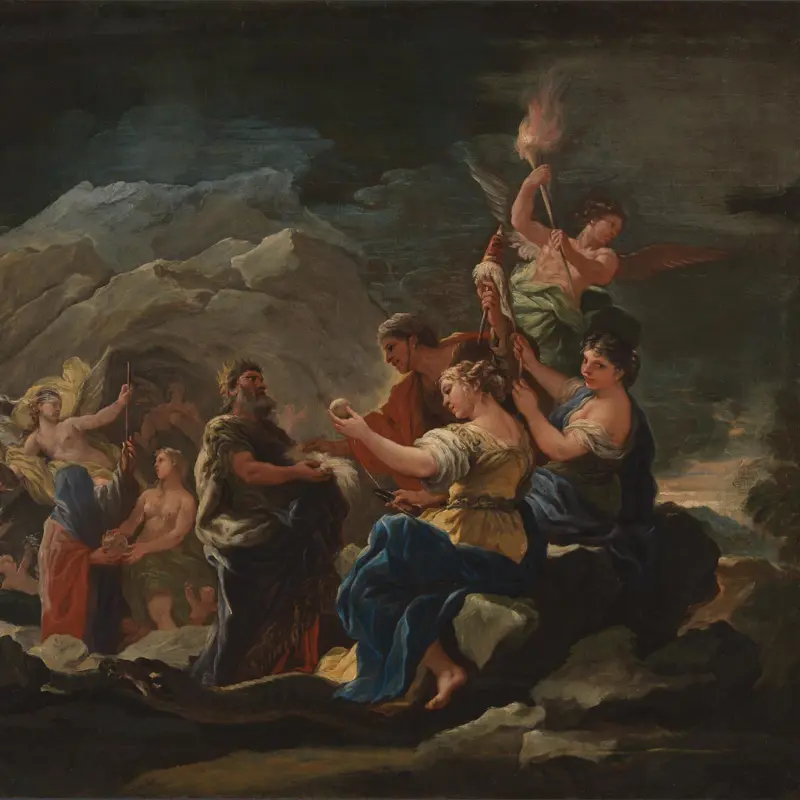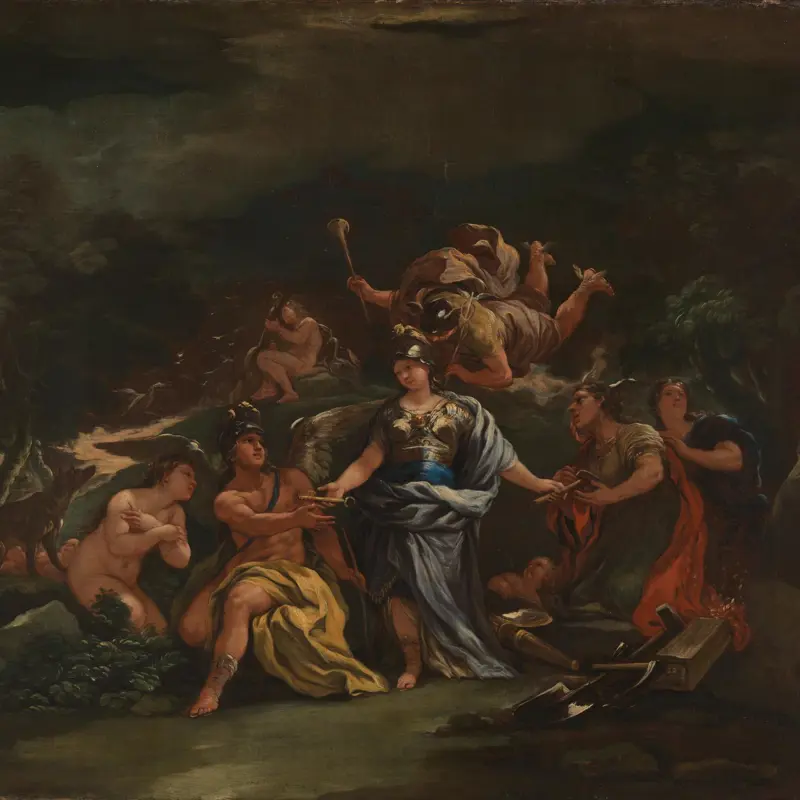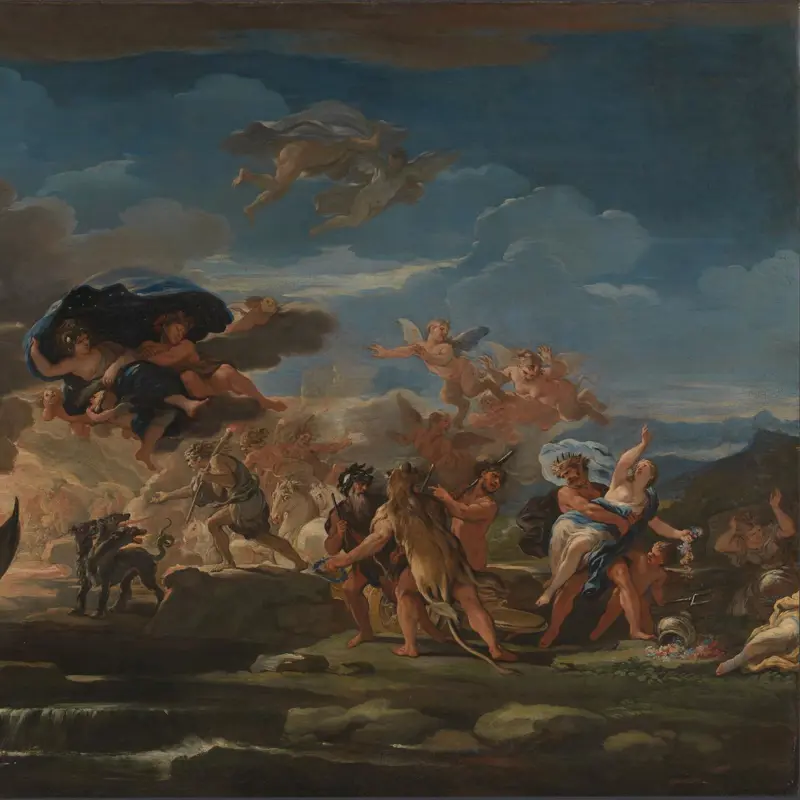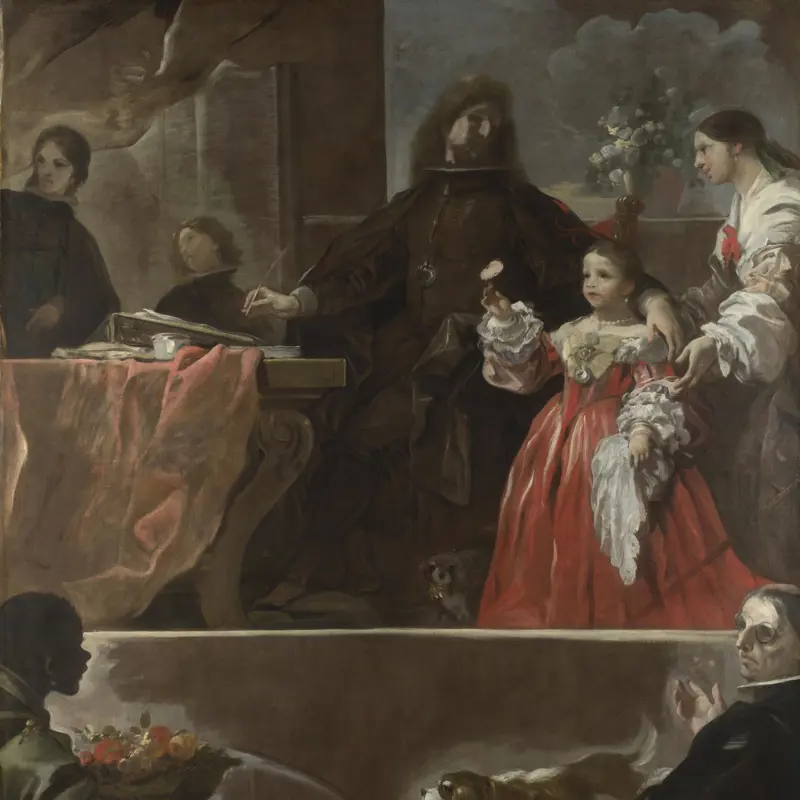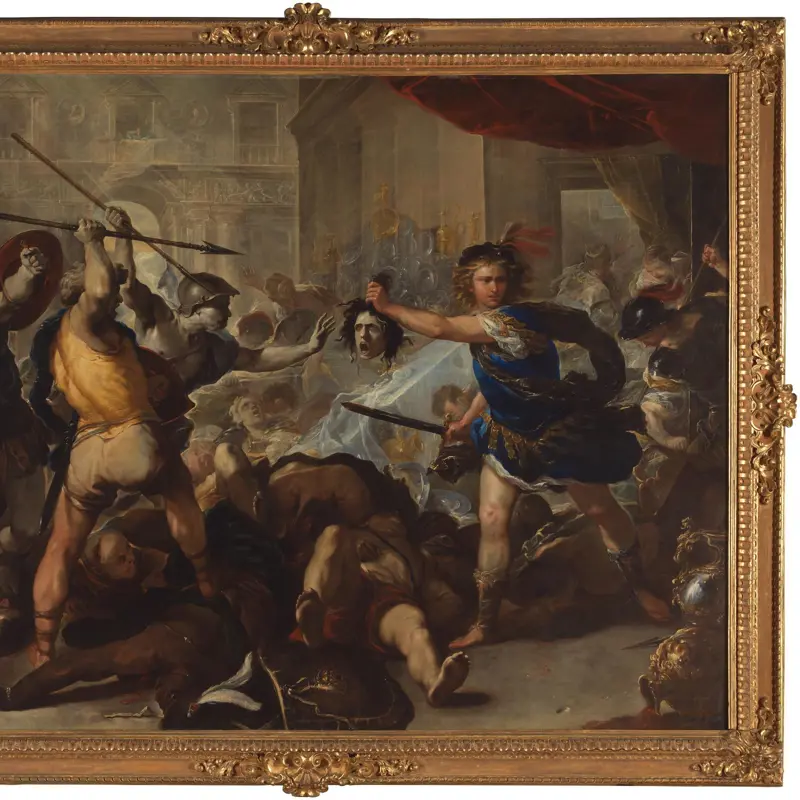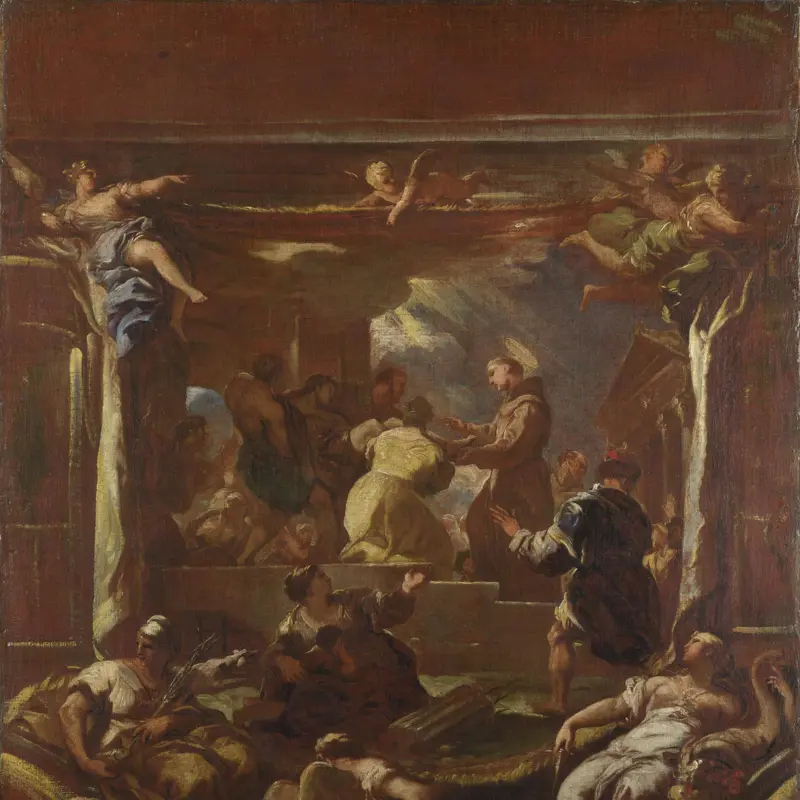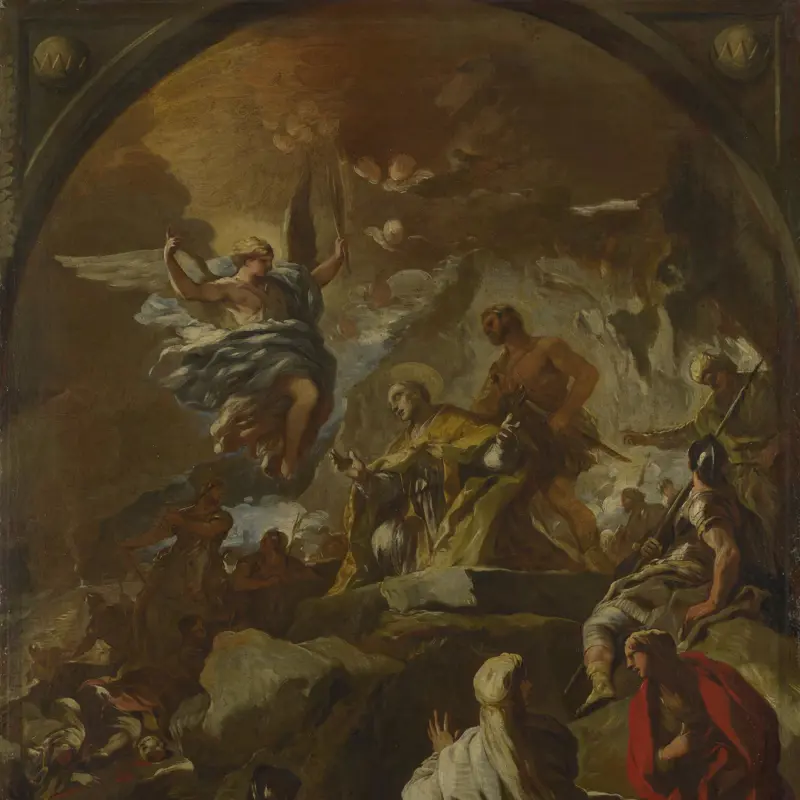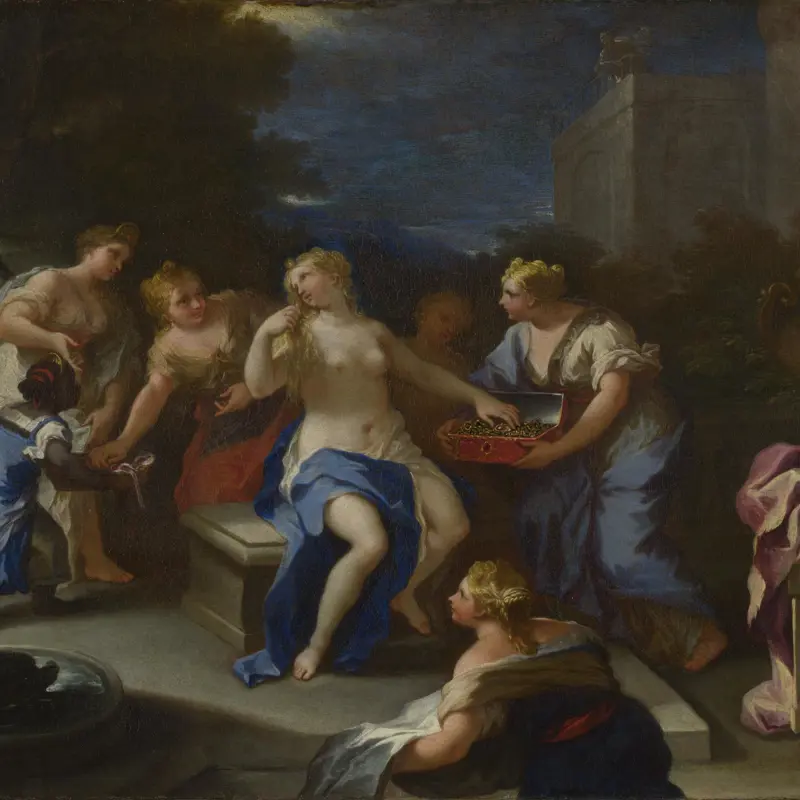Luca Giordano, 'Mythological Scene of Agriculture', early 1680s
About the work
Overview
This modello, or detailed oil study, is one of a group of 12 that Giordano made in preparation for the ceiling frescoes in the Palazzo Medici Riccardi in Florence in 1682–85. The overall theme of these highly elaborate, showpiece frescoes is the progress of mankind by means of Wisdom and Virtue.
This scene corresponds with the right half of the ceiling decoration above the north wall of the grand Galleria, opposite the windows. Its theme is fertility. Ceres, goddess of agriculture, is sowing a field ploughed by the muscular Triptolemus, who also had agricultural associations. Flora, the flower goddess, sits with her back turned; watering the soil close by is the wind god Zephyr. Between them is Vertumnus, protector of gardens and husband of Pomona, goddess of orchards, who is pruning a pomegranate tree at the left. Ceres’s sister Juno rides a chariot drawn by two peacocks, while in the foreground a river god sits astride a stream.
Key facts
Details
- Full title
- Mythological Scene of Agriculture
- Artist
- Luca Giordano
- Artist dates
- 1634 - 1705
- Part of the series
- Modelli for the Palazzo Medici Riccardi, Florence
- Date made
- Early 1680s
- Medium and support
- Oil on canvas
- Dimensions
- 121.4 × 192 cm
- Acquisition credit
- Presented by the Trustees of Sir Denis Mahon's Charitable Trust through the Art Fund, 2013
- Inventory number
- NG6630
- Location
- Not on display
- Collection
- Main Collection
- Frame
- 17th-century Italian Frame
Provenance
Additional information
Text extracted from the ‘Provenance’ section of the catalogue entry in Gabriele Finaldi and Michael Kitson, ‘Discovering the Italian Baroque: The Denis Mahon Collection’ (exh. cat. National Gallery, London, 1997), London 1997 and supplemented by the National Gallery’s Annual Report, ‘The National Gallery: Review of the Year, April 2012 – March 2013’; for further information, see the full catalogue entry.
Exhibition history
-
2023Luca Giordano: Maestro barocco a FirenzePalazzo Medici Riccardi30 March 2023 - 5 September 2023
Bibliography
-
2001
C. Baker and T. Henry, The National Gallery: Complete Illustrated Catalogue, London 2001
-
2014National Gallery, The National Gallery: Review of the Year, April 2012 - March 2013, London 2014
About this record
If you know more about this work or have spotted an error, please contact us. Please note that exhibition histories are listed from 2009 onwards. Bibliographies may not be complete; more comprehensive information is available in the National Gallery Library.
Images
About the series: Modelli for the Palazzo Medici Riccardi, Florence
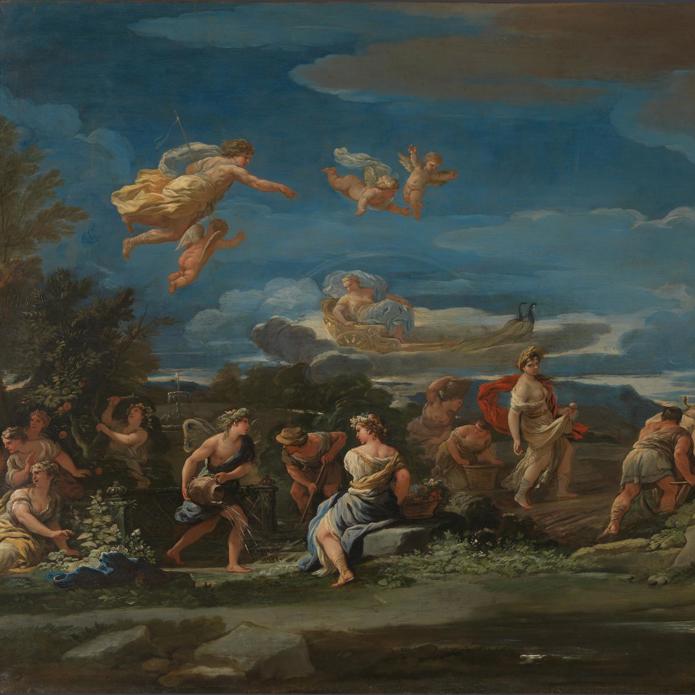
Overview
This group of ten paintings was made by Giordano as a series of detailed oil studies (or modelli) for the ceiling frescoes in the Palazzo Medici Riccardi in Florence, which are among the artist’s finest achievements. The modelli are part of a set of 12 (the other two are in private collections).
Nine of the paintings relate to the ceiling of the highly ornate Galleria, built to house a precious collection of antiquities and function as a public reception room. The other is associated with the ceiling of the adjacent Library. The overall theme in the Galleria is the elevation of mankind through Wisdom and Virtue, using allegorical and mythological figures to represent different strengths and traits. It culminates in a centrepiece which presents the wealthy Medici family as the paradigm of both these qualities.
Giordano seems to have worked up these modelli to clarify his designs and may have presented them to his client, the Marquess Francesco Riccardi, for approval before the frescoes were executed.

